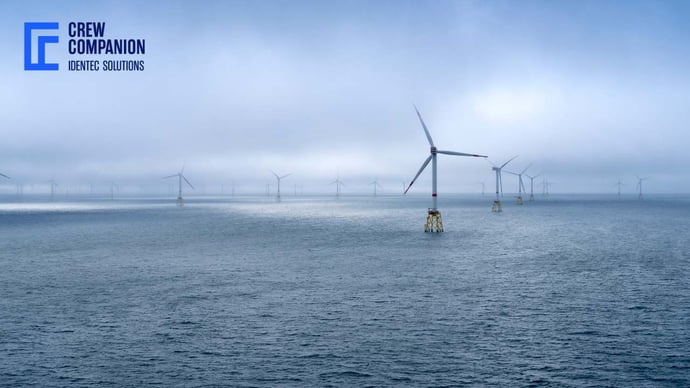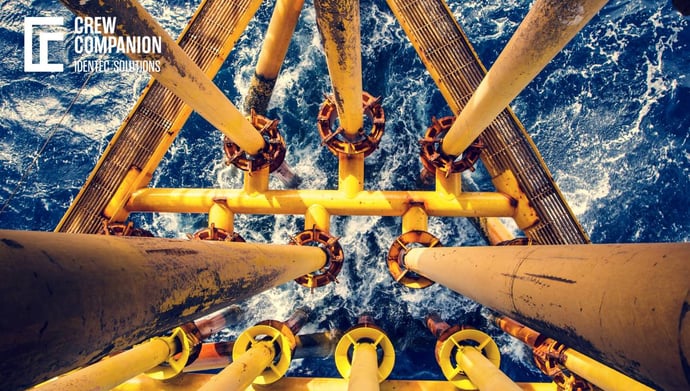Offshore Incident: HSE in Wind Parks
| Written by Mark Buzinkay
The offshore wind industry is on the rise as countries worldwide look to increase renewable energy production. But it's not without risk -- many of the tasks associated with this type of work take place in harsh and unforgiving conditions. For workers, strong winds, extreme temperatures, and long hours can be a part of their daily routine.
In this blog post, we'll explore the potential of offshore wind power and illustrate some of the dangers associated with working in such an environment, examine the rescue chain and suggest ways to improve it.
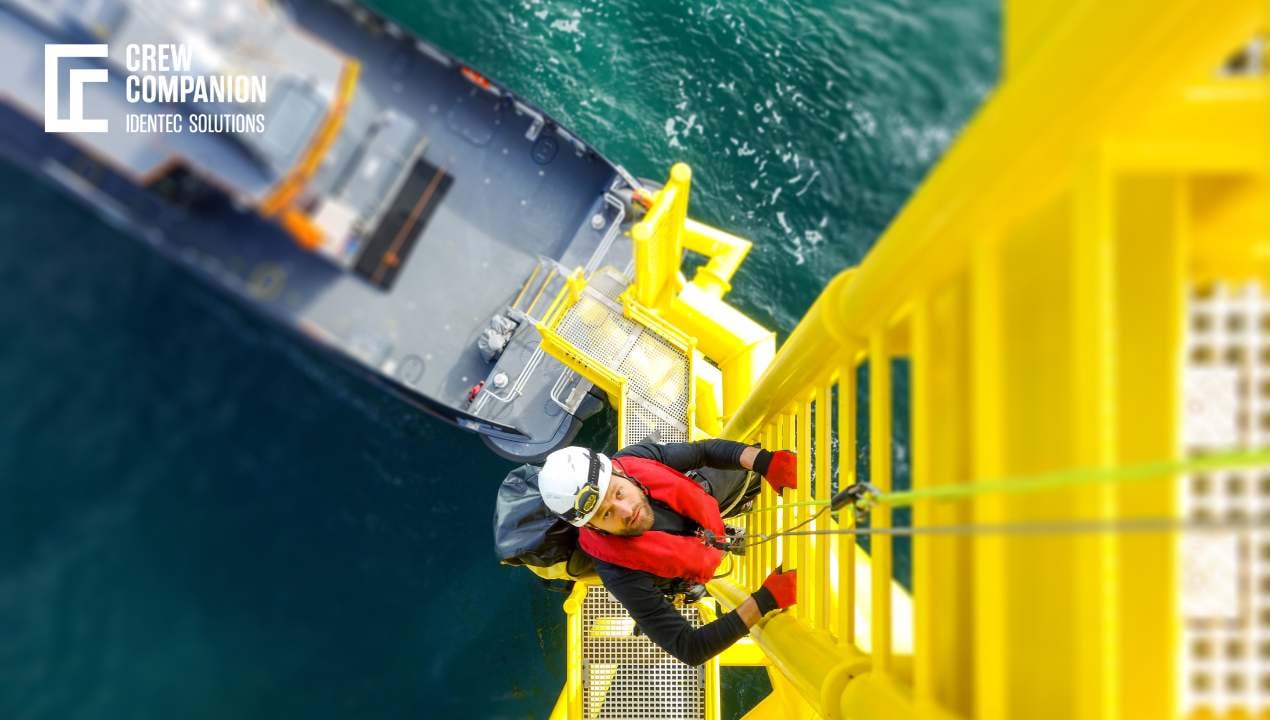
No video selected
Select a video type in the sidebar.
Offshore Wind Industry Outlook
The offshore wind industry is making great strides in the renewable energy space. We've seen impressive growth in recent years, with countries around the world looking to harness the potential of clean energy production from the ocean.
Currently, Europe has the most offshore wind capacity, accounting for over 47% of global installations. This is followed by Asia, especially China, which has around 44%. However, China will bypass Europe in the coming years very quickly. The industry estimates that more than 400 GW production capacity will be installed offshore by 2030.
Much of this progress can be attributed to increased funding and a progressive political energy agenda, but also to technological advances that have made offshore turbines more efficient and cost-effective. These innovations include improved turbine design, larger blades, better gearboxes and new foundations that can withstand extreme conditions. As these improvements continue to be implemented, especially far off the coast, as floating installations, we should expect even greater deployment in coming years.
Hazardous working environment
The offshore wind industry is a rapidly growing sector, but it presents a range of hazards to those working there. From extreme weather conditions to cramped and hazardous working spaces, the risks of working in the offshore wind industry should not be underestimated.
Wind farms are often constructed far away from land, at great depths, and in choppy seas. This creates a hazardous environment for workers tasked with constructing and maintaining these giant turbines. For example, strong winds have been reported to have caused the tube-like structures connecting turbines to the sea floor to break off and plunge into waves many feet deep.
Workers must be equipped with specialized protective gear, including thick outerwear, gloves, life vests, helmets and more, in order to protect themselves against extreme temperatures and strong currents.
Aside from weather-related threats, offshore wind workers face additional occupational health risks such as working under intense pressure, staying alert for extended periods; dealing with extremely heavy equipment, having limited communication tools with other members of their team; operating in darkness; adapting their bodies to sudden changes in light/temperature/pressure or gravity during work hours; as well as mental fatigue due to being separated from family while working abroad on isolated installations.
The offshore wind certainly provides an immense opportunity for clean energy production, but it can become perilous for workers if employers do not take proper safety measures. Employers need to ensure that employees are adequately trained before sending them out on assignments and should provide detailed instructions about the steps to take if an emergency occurs at sea. By implementing safety protocols now, we'll ensure that offshore wind remains an attractive career option for tomorrow's generation of green energy engineers and technicians for years to come.
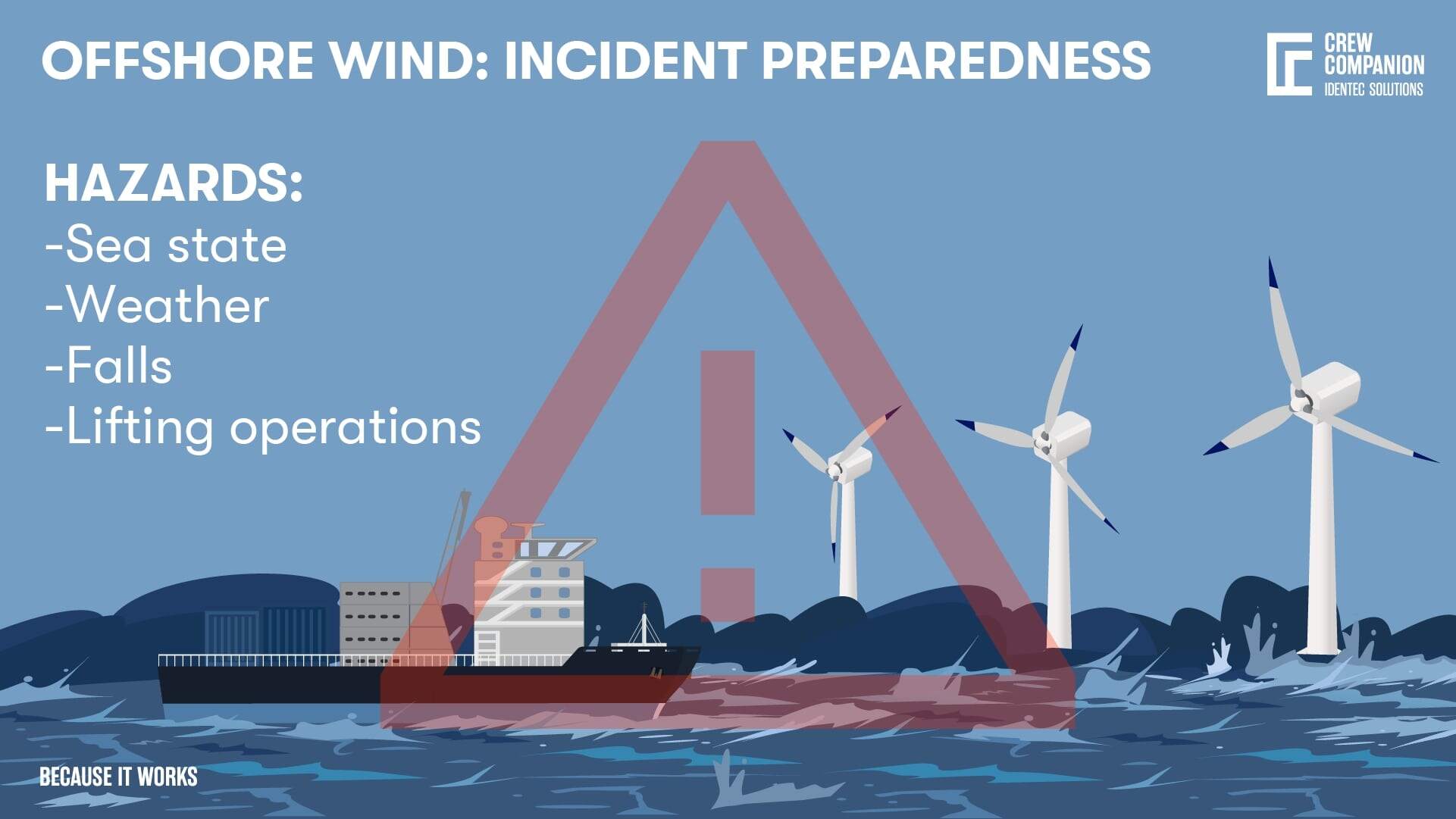
Offshore Incidents: Threats and dangers
Offshore wind parks are growing in popularity, but they also come with different risks and dangers. From unpredictable sea states to risky lifting operations, a lot can go wrong when working with offshore wind parks. To ensure safe and successful operations in offshore wind parks, it's essential to understand the common threats that come with them.
Working long shifts and being tired
Since offshore wind parks operate around the clock, the crews and workers responsible for their operation must maintain a consistent, around-the-clock work schedule. Working long shifts in an offshore environment can be physically and mentally taxing and majorly impact worker fatigue. This fatigue can not only lead to a decrease in productivity but can also lead to a decreased vigilance in safety measures. Offshore incidents due to worker fatigue, caused by long shifts, can put workers, the public, and the environment at risk.
Offshore wind park operators should also consider additional measures to shift rotating to ensure their workers stay alert and vigilant while on shift. This includes providing regular safety training offshore and briefings to employees, as well as providing personal protective equipment and ergonomic tools to reduce the toll of long and repetitive work. Each of these measures can help reduce the likelihood of fatigue-induced offshore incidents.
Unexperienced crew are less aware of dangers
Though offshore wind parks have been around for many years, they have increased in complexity and sophistication. The machines used in offshore wind parks have a higher powered technology than the predecessor and require more intricate maintenance. This increases the need for a well-educated and experienced crew. Still, the risk associated with this increased complexity is that inexperienced crew members can become overwhelmed by the situation. Due to the high demand for the workforce and the lack of available, experienced crews, more and more inexperienced workers enter the offshore wind labour market.
Unexperienced crew members may not understand the potential for offshore incidents such as heavy weather conditions, strong currents, and large waves. These conditions can drastically reduce visibility and render the crew powerless to react to any potential dangers. It is also much easier for inexperienced crew members to become confused in any emergency situation, and this can further compound the risks associated with offshore wind parks.
Another issue is that inexperienced crew members may not be aware of the safety protocols that need to be followed when working offshore. Protocols such as following a regular checklist for daily operations, conducting thorough evaluations of the wind park, and always having a backup plan are essential for the successful operation of an offshore wind park. Without the proper training and knowledge of these protocols, the risk of an offshore incident is increased.
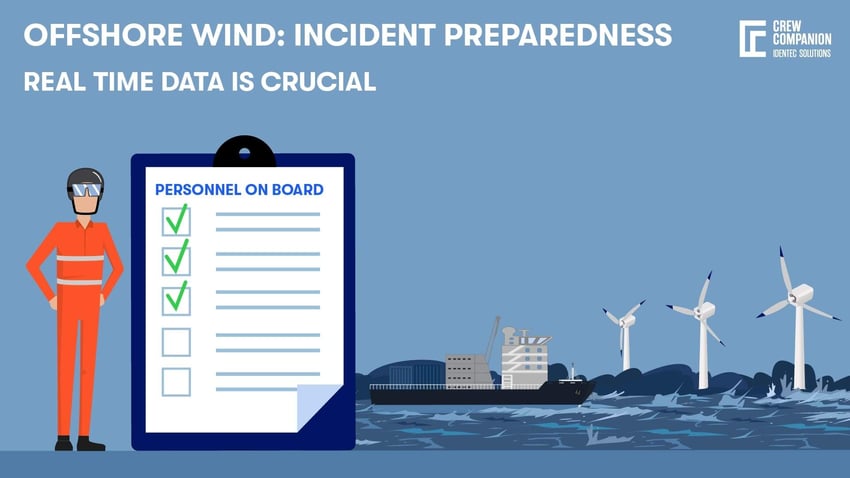
Emergency preparedness
Offshore incidents can take the form of equipment failure, human error, natural disasters, mechanical issues, or any kind of accident or event that causes an interruption in the operation of an offshore wind park. Equipment failure is the most common cause of offshore incidents and can be the result of improper maintenance, faulty machinery, or inadequate safety measures. Human error is another common source of offshore incidents and can be caused by a lack of training or improper procedures. Natural disasters such as hurricanes, earthquakes, or tsunamis can also lead to offshore incidents. Lastly, mechanical issues such as collisions, grounding, or capsizing can occur due to improper design or operation of the offshore wind park.
Implementing preventative measures to minimize offshore incidents is essential. First, it is crucial to ensure that all personnel are properly trained and aware of their roles and responsibilities. Second, the equipment must be maintained and inspected regularly to ensure it functions properly. Third, the design and operation of the offshore wind park must comply with local and international regulations to prevent mechanical incidents.
In addition to preventive measures, safety measures should also be taken to mitigate the risk of an offshore incident. Emergency preparedness plans should be written, and drills should be conducted regularly to ensure that all personnel know what to do in the event of an offshore incident.
Offshore incidents: Rescue techniques and procedures
There are a few important aspects to remember when it comes to rescuing techniques from an offshore wind turbine or platform. First and foremost, quick action and decision making is essential if a person gets into trouble while at sea due to their remote location.
The first step in any rescue situation is to assess the extent of the problem -- this can be done by using tools such as binoculars or cameras for a more detailed look and a better understanding of what's going on. Once an assessment has been made, it's time to proceed with the appropriate course of action. Depending on the situation, several rescue techniques may be necessary.
One option is evacuation-- this would involve removing people from the area as quickly as possible through various watercraft. For example, if someone is injured during an operation and needs urgent medical attention, evacuating them via a helicopter or boat would be the best solution, as it would ensure they get help in a timely manner and lessen the chances of any additional danger.
Another rescue technique used with offshore wind turbines involves raising and lowering personnel using winches. This would most likely happen after an accident or malfunction has occurred and requires immediate actions such as repairs, replacements or maintenance work to correct the issue or prevent further damage.
In some cases, rescuers can use lifeboats or liferafts, which are designed specifically for open-water navigation - these crafts provide an extra layer of safety should an evacuation become necessary due to unforeseen circumstances such as bad weather or equipment failure. Last but not least – rescuers should also be prepared to utilize communications devices such as radios so that help can be requested in case of emergency.
Overall, there are many different methods available when it comes to rescuing people from offshore wind platforms -- but thanks to rapid advances in technology, new strategies are constantly emerging that make existing solutions even more efficient and effective!
Offshore incidents: Communication
Communication technology is integral to any offshore emergency procedure and should never be underestimated. With the right tools in place, personnel can easily coordinate their efforts to ensure a swift and efficient response to any incident that may arise. Therefore, rule number one is to have a backup device for every crew member on a wind turbine platform.
One of the most common communication technologies used during these types of situations is TETRA, or Terrestrial Trunked Radio. These devices enable workers to stay connected with their support vessel even from a wider distance. This can be invaluable for staff as it allows them to communicate instantly with one another, providing critical updates on the location of vessels and personnel without delay.
Additionally, radio systems such as VHF (very high frequency) and satellite phones are also essential when it comes to ensuring everyone is kept up-to-date on important information such as weather conditions, changes in visibility, etc. During an offshore emergency, having reliable radio equipment at hand makes it much easier for workers to quickly and accurately relay information to each other – making sure everyone stays safe and well-informed at all times.
Finally, personal locator beacons (PLBs) have also become increasingly popular due to their effectiveness in tracking people who find themselves in distress at sea - these devices allow anyone who gets lost or injured during operations to easily call for help with a simple push of a button.
Communication technology plays an integral part in keeping workers safe when working out on the open ocean – from basic radios up to advanced satellite systems – they all play an important role when it comes to responding efficiently and effectively during an offshore emergency!
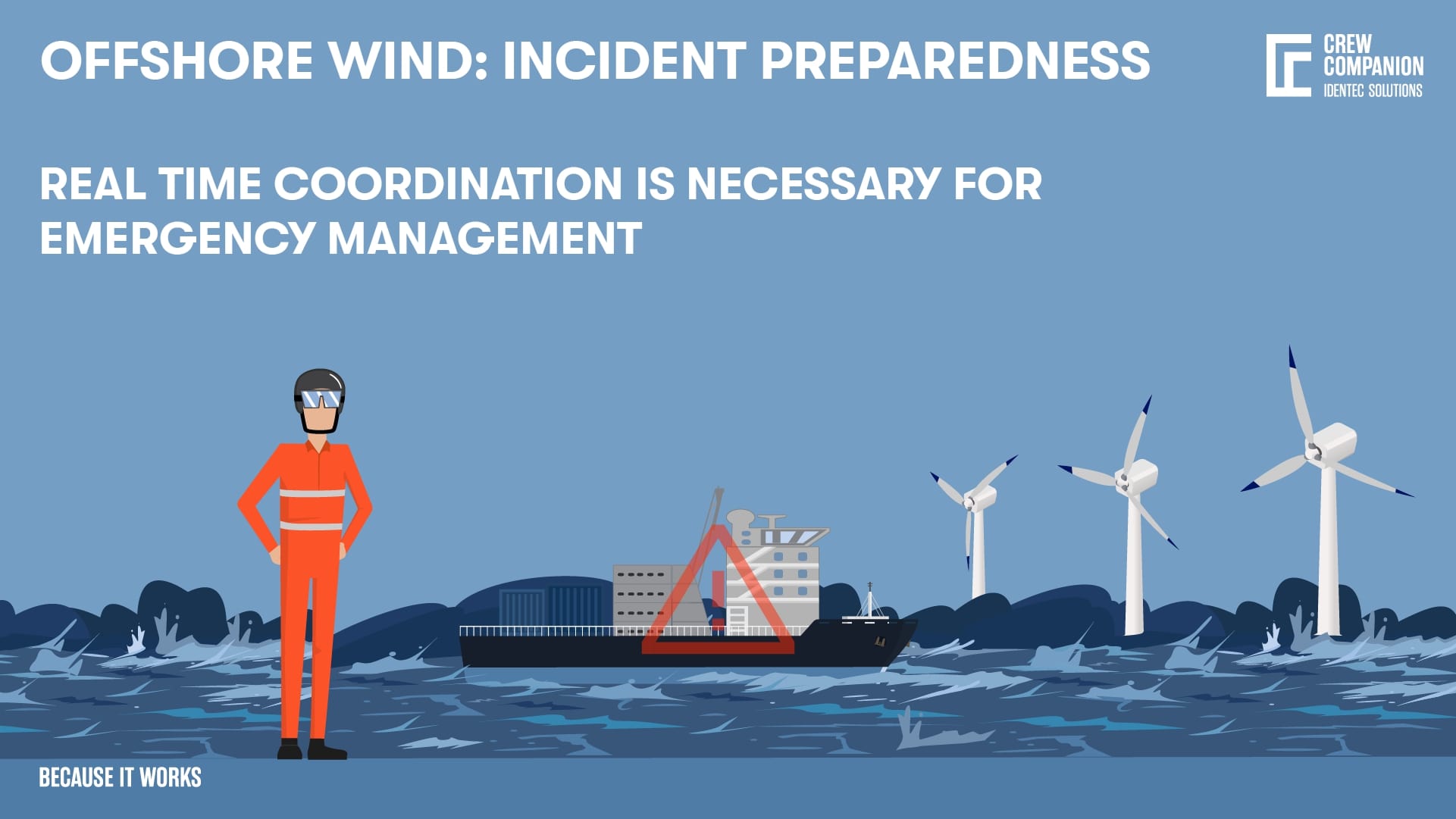
Offshore Incident: Coast Guard and Onshore Emergency Management
During an offshore emergency, the Coast Guard and onshore emergency management personnel play a vital role in ensuring everyone involved is kept safe.
The Coast Guard is responsible for coordinating all maritime rescue efforts. This includes providing search and rescue personnel as well as equipment such as helicopters, boats, and medical teams to respond to any situation that might arise at sea. National regulations will determine how the Coast Guard operates, communicates and designs the chain of information and command.
On the other hand, onshore emergency management is responsible for coordinating land-based interventions in case of an offshore incident – this includes having personnel ready to monitor the situation, communicate to the public and interact with the affected vessel and crew. In addition, they are responsible for ensuring all communication channels between the incident site, coastal stations, and main control points remain open during any operation.
The Coast Guard and onshore emergency management work together in many ways – from providing real-time updates about developing situations to coordinating the deployment of resources on both land and sea. Both entities are essential for ensuring life-saving operations can occur as quickly as possible should a situation occur out at sea.
It's important to remember that during an offshore emergency, call time is of the essence - quick decisions must be made and resources quickly deployed in order to save lives - this is why the seamless coordination between the Coast Guard, onshore agencies and the affected vessel/crew is so important! Accurate data, real-time, is the single crucial part of all, like POB lists. By working together and having precise data at hand, they increase their chances of rescuing those in distress while limiting potential damage to property or further loss of life.
Learn more about HSE standards in the North Sea ...
Ways to keep your POB list updated
Personnel-on-board (POB) lists are an important part of any journey at sea and should be taken seriously. In most countries, they are mandatory. Having a POB list allows maritime personnel to keep track of everyone on board and quickly identify who is missing should an incident occur.
There are several ways POB lists can be created - the most common being paper or spreadsheet documents that need to be filled out prior to departure. This method works well in cases where all crew members are known before embarking, and no changes will be needed during the voyage. However, it takes some effort to check the list manually, which can be time-consuming with a larger crew. Additionally, the list must be manually transferred to the onshore control centre or other institutions involved in the process.
The traditional T-board method is still used for tracking crew members on board vessels. It involves having a physical board divided into sections, and each section has slots for inputting the names or ID numbers of those on board along with any other relevant details such as dates, times and roles.
One key advantage of this system is that it's relatively easy to set up and maintain - all you need is a marker pen and some paper. However, one major disadvantage of this method is that it requires constant manual updating whenever changes occur - whether that's due to people coming on board or leaving it. This can be time-consuming and laborious, but also prone to errors or loss, especially if there are frequent changes in the personnel onboard. Furthermore, physical boards must be translated into a kind of list or digital document to be transferred digitally to third parties.
For dynamic POBs, digital solutions may offer a more efficient solution since crews often change due to illness, leave days etc... For example, software programs now allow for real-time tracking of crew members, meaning updates can be made as needed without having to start the process from scratch each time.
Another popular way is using RFID tags placed on personnel before boarding. These chips contain information about each individual's credentials which can then be scanned when they board or disembark the vessel – allowing for fast and accurate tracking of crew members regardless of their whereabouts. This real-time data can be transmitted directly to the onshore control centre, being available for any intervention.
No matter what type of POB list you opt for, it's essential that it's kept up-to-date at all times so that in case of an emergency, there's no confusion over who's on board - making sure everybody stays safe during their offshore work assignment!
Takeaway
In the event of an offshore emergency, timely and accurate information is critical for ensuring the safety and survival of all those on board. Real-time data such as personnel-on-board (POB) lists can be used to quickly identify who's missing in case of an incident. Having access to detailed incident records can help understand how best to approach a given situation.
Real-time data can improve chances of survival dramatically - it allows maritime personnel to quickly assess what actions need to be taken to help crew members who are stranded or injured. For example, if all personnel have been accounted for during an onboard accident, medical teams can focus on the injured crew members rather than searching for missing people. Similarly, having real-time access to weather reports and nautical charts can be essential when trying to reach affected vessels before they become unreachable due to heavy storms or bad conditions at sea.
By providing real-time information both before and during emergencies, maritime personnel can better prepare themselves for whatever danger may lie ahead - improving chances of survival by ensuring the right decisions are taken at the right time!
Dive deeper into one of our core topics: Emergency Response Management
Sources:
(1) Soren Pedersen, Dewan Ahsan, Emergency preparedness and response: Insights from the emerging offshore wind industry, Safety Science, Volume 121, 2020, Pages 516-528, ISSN 0925-7535,
https://doi.org/10.1016/j.ssci.2019.09.022.
Note: This article was updated on the 6th of November 2024

Author
Mark Buzinkay, Head of Marketing
Mark Buzinkay holds a PhD in Virtual Anthropology, a Master in Business Administration (Telecommunications Mgmt), a Master of Science in Information Management and a Master of Arts in History, Sociology and Philosophy. Mark spent most of his professional career developing and creating business ideas - from a marketing, organisational and process point of view. He is fascinated by the digital transformation of industries, especially manufacturing and logistics. Mark writes mainly about Industry 4.0, maritime logistics, process and change management, innovations onshore and offshore, and the digital transformation in general.



